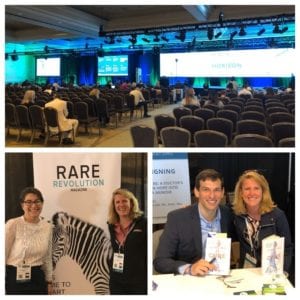To read part 1 click here
Kristie’s medical mystery was now solved. What was the next step? After speaking with her genetic counselor about her results, Kristie was referred to a metabolic specialist. It would once again be months before she would be seen.
In the meantime, Kristie was searching Google and Facebook for information and to connect with others. She learned that there was a lot more to the disease than just losing your vision and having nerve pain. Patients could lose their hearing, lose their sense of smell, have mobility issues, and more. She even learned that the shortened fourth toe she had on her left foot since birth was part of the disease. She read that a special diet was required to lessen and slow symptoms.
“I was reading and learning that there was a special diet and that I was maybe on the worst diet for the disease.”
Kristie was still following a low carb diet and was continuing to exercise as much as she could. Refsum disease causes a buildup of phytanic acid in all tissues including fat tissues. Phytanic acid is typically found in higher quantities in dairy products, certain meats, and fish. Not only was Kristie’s revised diet probably higher in phytanic acid, but with fewer carbs and working out, she was burning more fat and releasing more of the toxic substance.
“I didn’t think I should wait until the appointment, I thought I needed to figure this out sooner rather than later. I did get the appointment moved up, but it was still a month away.”
Kristie was able to learn a lot from an established Refsum disease Facebook group shortly after her diagnosis.
“They were lifesavers at this time. I knew nothing about the disease. The Facebook members really helped me to understand the disease and the diet.”
Kristie eventually saw the metabolic specialist and dietician, but they were fairly new to Refsum disease as well. There are no published treatment guidelines. Kristie was told to follow up with a neurologist, cardiologist, and ENT to get baseline tests. However, when she saw these specialists, she basically had to educate them about the disease.
“There wasn’t any active research going on. There was no advocacy group, there was nothing on clinicaltrials.gov. There were no clinical trials ever.”
What Kristie learned quickly was the diet wasn’t going to be enough. Patients were losing their vision, hearing, and mobility.
“I have a crystal ball for what my life will look like in ten or fifteen years if there isn’t a treatment or cure for this disease. “

By August, Kristie decided she wanted to start a patient advocacy group to drive research and a cure. She talked to the Facebook group and they agreed it was a good idea. Her husband was also on board.
Kristie heard that the best way to jump-start the foundation was to go to the Global Gene Patient Summit in California. Her and her husband went to the conference in September 2019.
Kristie came back from that conference with a wealth of knowledge and connections to move forward quickly with the foundation and start advocating for a cure.
Click here to read part 3!


